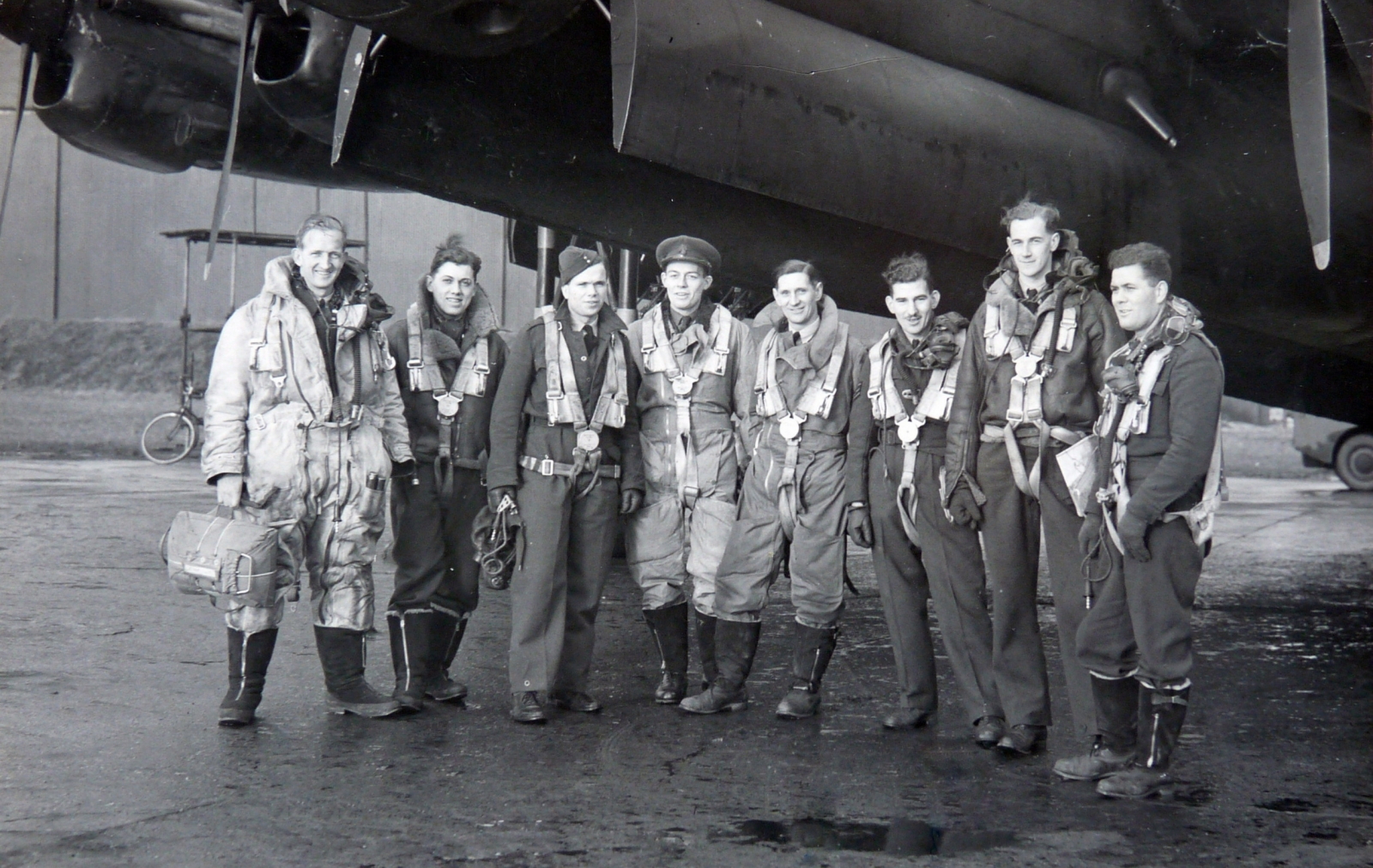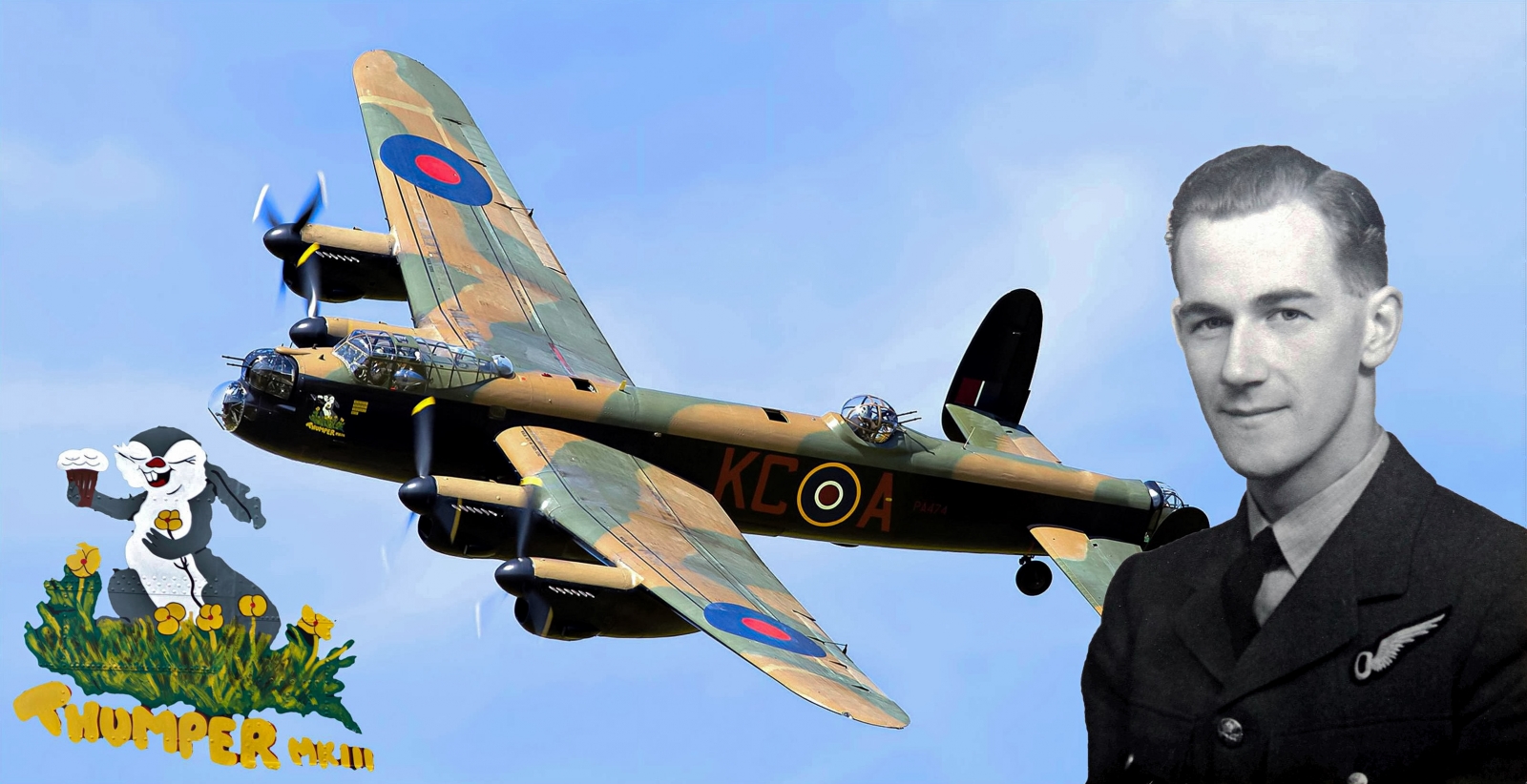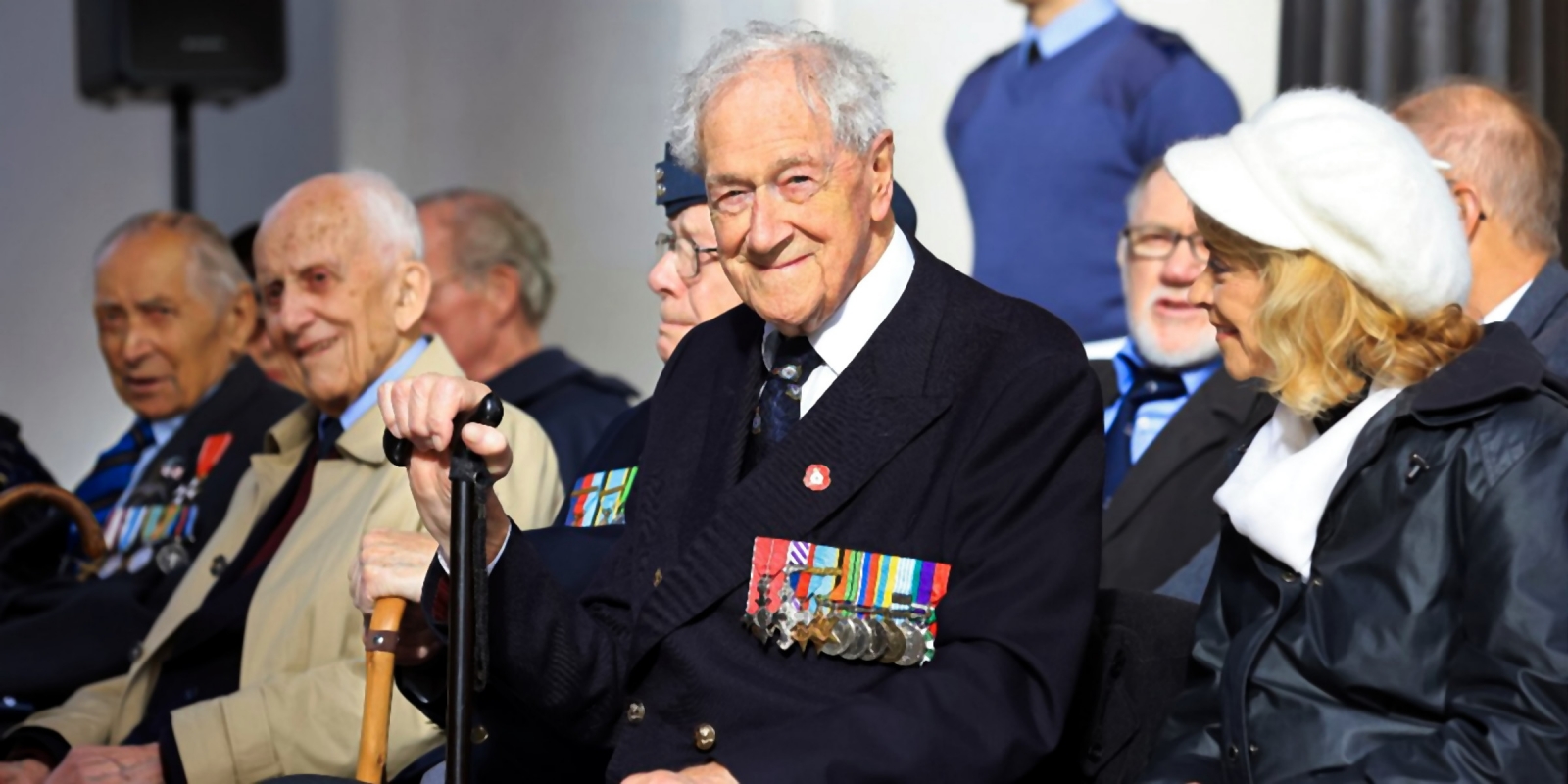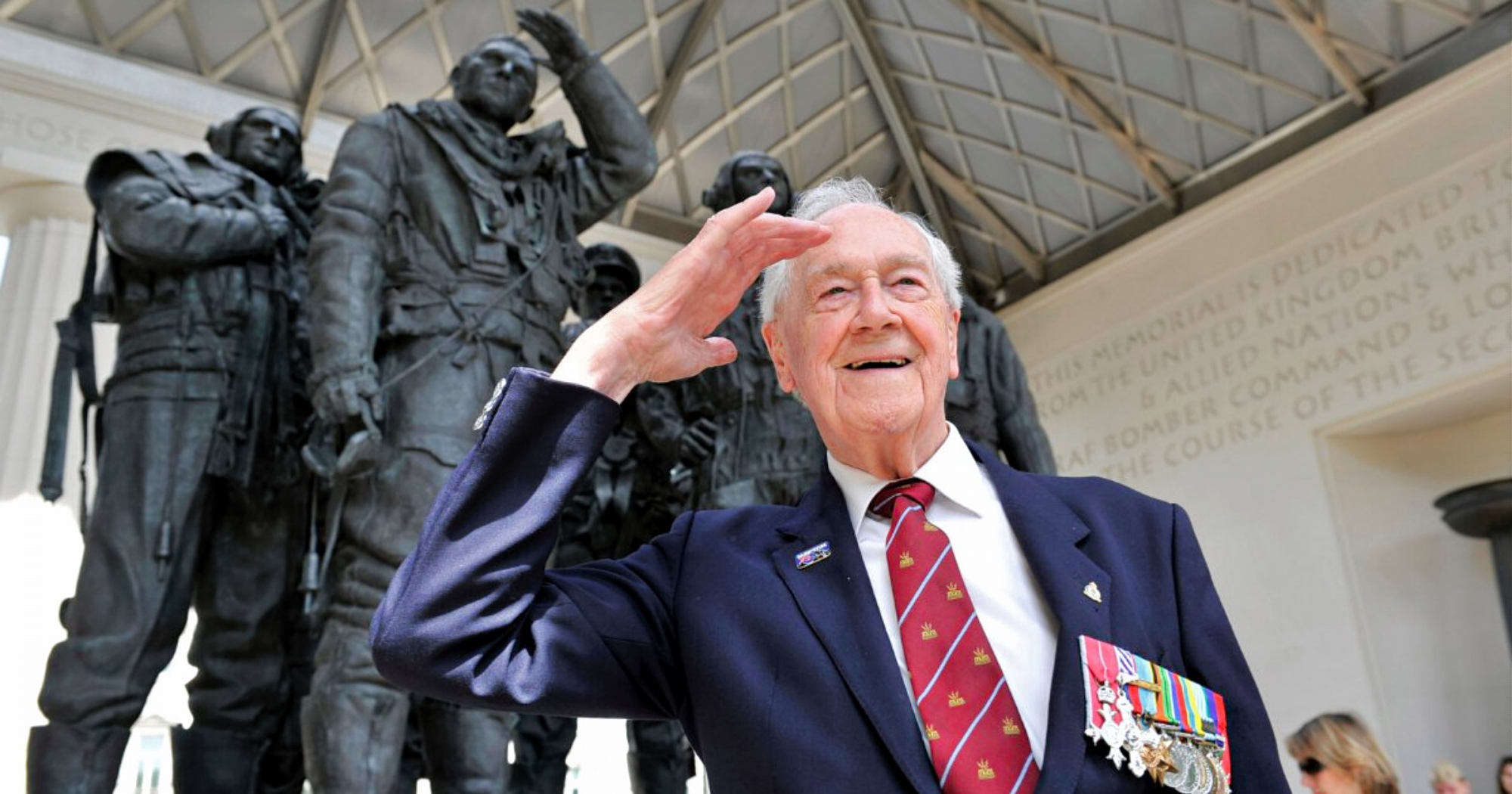Remembering Wing Commander John Bell MBE DFC LdH
Header image: John Bell MBE DFC LdH at the RAF Bomber Command Memorial, Green Park, London.
It is with great sadness that the BBMF acknowledges the passing of Wing Commander John Bell MBE DFC LdH on 18th March, one week before his 101st birthday.
John volunteered as RAF aircrew in June 1942 at the age of 18, the minimum age to sign up, and he was called up in September that year. At 6 feet 4 inches tall he was told he was too tall to be a pilot and so he trained in South Africa as an observer, combining the roles of navigator, bomb-aimer and gunner. On returning to England, he was posted as a bomb-aimer, the crew position he occupied for all of his 50 Lancaster bombing ‘ops’. He joined a crew captained by Flying Officer (later Flight Lieutenant DSO DFC) Bob Knights and, after completing their conversion training, the crew was posted to 619 Squadron at Woodhall Spa in the summer of 1943. John was then 20 years old.
The crew’s first ‘op’ was flown to Hamburg on 24th July. During the winter of 1943-44, the crew flew to Berlin eight times, during the so-called “Battle of Berlin”. After six months on ‘ops’ Bob Knights and his crew were reaching the end of their first tour. With the likelihood that they would then be split up and sent to training jobs, they decided it would be better to stay together and so volunteered for an immediate second tour of ‘ops’ with 617 Squadron. After an interview with the CO of the squadron, Wing Commander Leonard Cheshire, the crew joined 617 Squadron at Woodhall Spa on 29th January 1944. (619 Squadron had by now moved to Coningsby, swapping bases with 617 Squadron.)

Whilst with 619 Squadron, the crew’s Lancaster had been named “Thumper Mk II”. With 617 Squadron their aircraft, Lancaster B.1 DV385 ‘KC-A’, became “Thumper Mk III”. BBMF Lancaster B.1 PA474 wore the markings and nose art of “Thumper Mk III” from September 2012 to 2016, and it was during that time that John became a particular friend of the BBMF. John flew 27 of his 28 ‘ops’ with 617 Squadron in the real “Thumper Mk III”. The crew’s ‘ops’ included attacks on viaducts, a railway tunnel, ‘V’-weapon sites and E-boat and U-boat pens, as well as the squadron’s vital contribution to the D-Day invasion, the ‘spoofing’ operation named Op TAXABLE. On nine of their ‘ops’ John aimed and dropped ‘Tallboy’ 12,000-lb “earthquake” or “bunker buster” bombs, using the special Stabilised Automatic Bombsight (SABS) which only 617 Squadron was equipped with. His last ‘op’ was flown on 5th August 1944, dropping a ‘Tallboy’ against submarine pens at Brest.

When John had completed a total of 50 ‘ops’ he was awarded the DFC and allowed to step back from operations. His luck had held that far, but enough was enough and it was time to stop. On 24th August 1944 John was posted as an instructor at No. 12 OTU, Chipping Campden. He was then sent to Catterick for redeployment and there his pre-war experience in accounting caught up with him and he was sent on an Accounting Officers course.
After the end of the war, he applied for and was granted a short service commission in 1947 and transferred to the Secretarial Branch. Posted to Fighter Command at Tangmere he was sent to Gatow, Berlin, to assist with the airlift. On his return to Britain in 1951 he was sent to Shepherd’s Grove in Suffolk to reactivate a former airfield for use by the USAF. While there he learned of the opportunity to train as a photographic interpreter (PI) and then, after completion of a PI course, he entered the world of Intelligence. For the next twenty-five years he served at the PI unit at Nuneham Park, Oxfordshire, and also in Singapore and Washington, with a period working with the USAF at Kimpo Air Base, Seoul, during the Korean War. Awarded the MBE in the 1970 New Year Honours List, to add to his DFC and two Korean War medals, he finally retired from the RAF in March 1977 with the rank of Wing Commander. In March 2016 he received the Legion d’Honneur (LdH) from the French Consul.
In retirement John worked hard for charity and was a stalwart campaigner for the RAF Benevolent Fund. He was a member of the 617 Squadron Association committee and became their president. He played a significant role in championing the commemoration of wartime Bomber Command, raising funds for the Bomber Command Memorial in Green Park and for the International Bomber Command Centre (IBCC) in Lincoln. His work has ensured that those who served with Bomber Command will be remembered and honoured by future generations.

John was always willing to share his time and his thoughts patiently with everyone and anyone at numerous events he attended, and also to take on official responsibilities at commemorations. Such was the dignity and charm of the man. He will be much missed and those of us who knew him are honoured to have met him and spent time with him. Thank you for all you did John.







